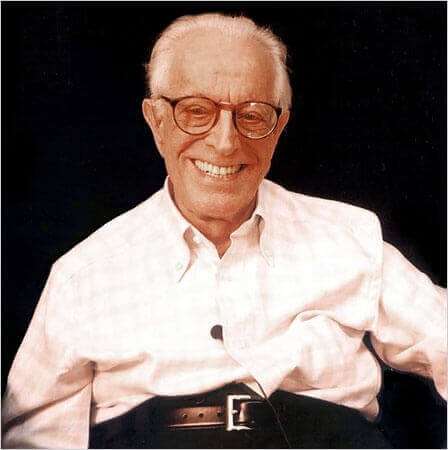In 1955, Albert Ellis created emotional-behavioral rational therapy. Albert Ellis was the founder and president emeritus of the Albert Ellis Institute in New York. He ended up being considered the second most influential psychotherapist in history, even after Sigmund Freud.
In 1953, Ellis discovered that psychoanalysis was not philosophical and ineffective, almost completely rejected behavioral therapy and, between 1953 and 1955, began to carry his therapeutic weapons with large amounts of philosophy and live desensitization, thus becoming a true rational emotional behavioral therapist.
- Initially.
- Rational behavioral emotional therapy was very simple and it may be for this reason that it initially did not reach the popularity it eventually achieved.
- It is a short method of psychotherapy that aims to help people achieve profound and intense change.
- Especially in the emotional level.
Rational emotional behavioral therapy has shown experimentally that, often (not always!), people can improve significantly in a relatively short period of time (10 to 20 sessions).
Without a doubt, rational behavioral emotional therapy is not the only intrinsically brief and intense therapy. The problem and at the same time the positive side of this therapy is to imagine a psychological treatment that includes both brevity and intensity, and try not to give worse results!
“There are three monsters that don’t allow us to move forward: I have to do this right, you have to treat me well and the world must be easy. “Ellis-
Let’s see. People live immersed in their context, both physical and social, in addition, we spend the day chasing goals or acting for a specific purpose:
Among other things, of course!
However, as we pursue these goals, we face an event or adversity that blocks us and can make us feel stranded or blocked. This event is named by Ellis with the letter A.
When this happens, people can feel a healthy and useful consequence; However, they can also suffer destructive and harmful consequences for health, which are called the letter C.
But what about the letter B? The letter B is used to name the person’s beliefs or thoughts. In this sense, there are two types of beliefs for Ellis: rational and irrational beliefs.
Rational beliefs (RB) help deal with unpleasant events (A). They usually consist of preferences, hopes or desires. For example, “I hope that such misfortune does not happen, but if it happens, I can face it and still have opportunities to be happy. “Or also: “I’d really rather please Joao, but if not, I’ll have a good time. “
“We teach people to hurt themselves. We can’t change the past, so let’s change the way people think, feel and behave today. “The. Ellis-
Irrational Beliefs (IB) help create feelings and actions that sabotage their ability to face a nasty particular. They are usually absolutist statements of the type should, should, should, etc.
The three basic absolutist claims that generate psychological problems are:
The 3 main (not the only) or principles (or ideas, as Ellis called them) used by rational emotional behavioral therapy since the early 1960s are:
“The emotionally mature person must fully accept the fact that we live in a world of probabilities and luck, where there is, and probably never, absolute certainty, and he must realize that this is not at all terrible. -IS. Ellis-
In the broad field of cognitive behavioral psychotherapies, Ellis’ proposals have been particularly helpful in treating anger, anxiety, frustration, social phobia, shyness and sexual dysfunction.
The impact of rational emotional behavioral therapy has influenced many other cognitive behavioral theories, such as Maxie Clarence Maultsby, Jr. ‘s rational behavior theory, Arnold A’s multimodal therapy. The cognitive therapy of Lazarus and Aaron T. Beck.

